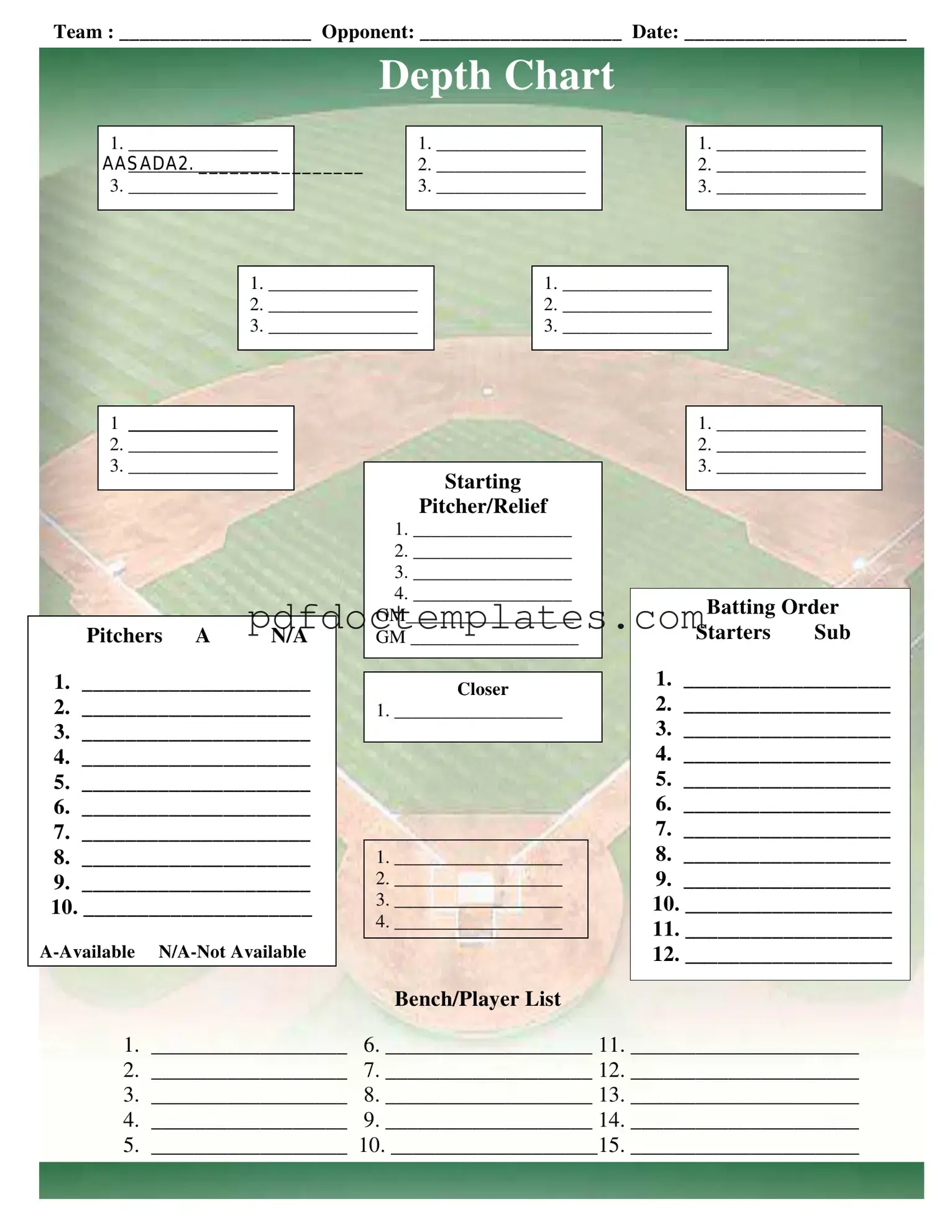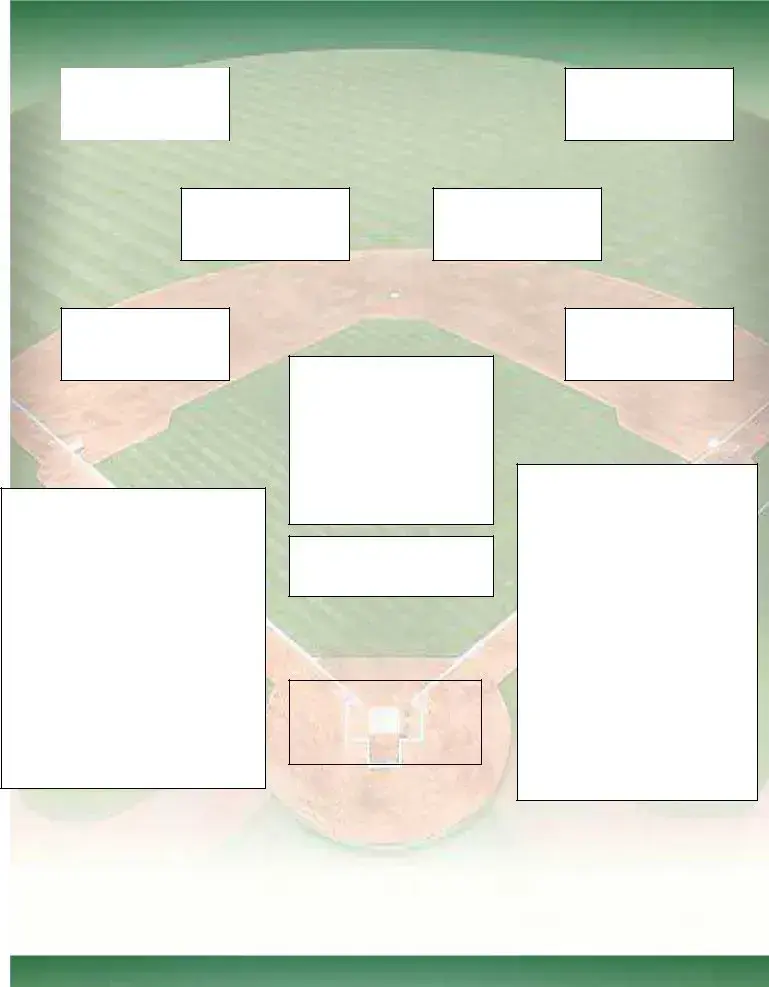Download Baseball Field Lineup Template
The Baseball Field Lineup form is an essential tool for coaches and team managers, helping to organize players and strategize for upcoming games. This form provides a structured way to document the team roster, depth chart, and batting order, ensuring that everyone knows their roles on game day. To streamline your preparations, fill out the form by clicking the button below.
Access Your Document

